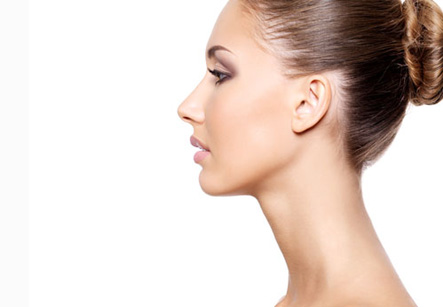Nose Reshaping
Introduction
This type of nose surgery is also called as rhinoplasty or a nose job. It enhances the appearance and proportion of nose, or corrects a breathing problem associate with the nose.There have not been major complications observed in nose reshaping surgeries.
As nose may not be fully developed at a younger age, cosmetic surgeons generally recommend patients to wait until they are at least 14 or 15, and possibly even later for boys, before undergoing rhinoplasty. There is no upper age limit for nose reshaping procedure, if the patient in good health. Nose reshaping is sometimes performed in conjunction with a facelift or other cosmetic surgeries to correct aging changes of the nose such as a drooping tip. Certain breathing problems associated with the internal nasal structures can be rectified simultaneously with nose reshaping procedure. It is crucially important for a cosmetic surgeon to understand patient’s expectations and decide if they are realistic enough to be met. Patients must realize that there are limitations to the procedure. Patients with sufficient physical and emotional maturity are usually very satisfied with their decision.
Iran leaps into world’s top 10 countries performing plastic surgery. Nose bandages symbolise Iran cosmetic surgery

Surgical Procedure
Inclusion criteria for rhinoplasty:
1. Patient’s nose appears too large for his/her face
2. Presence of a bump on the nasal bridge which can be seen in profile
3. Nose seems to be wider from the front view
4. Nasal tip is drooping or plunging
5. Nasal tip is thickened or enlarged
6. Nostrils are excessively flared
7. Off-center or crooked nose
8. Asymmetry in the nose due to previous injury
Evaluation for nose reshaping:
1. Medical history:
1. 1. Patient’s detailed medical history is discussed by the cosmetic surgeon, reviewing patient’s medical conditions, previous medical treatments, previous surgeries (which may include repair due to nasal injuries), current medicines prescribed.
1. 2. The surgeons would need to specifically know if the patient has any difficulty in breathing through nose, suffer from allergies that may cause nasal stuffiness, or are a chronic user of nasal spray.
1. 3. Patients are requested to detail the complete information to the surgeon.
2. Physical examination:
2. 1. Cosmetic surgeons also conduct a routine and painless examination of patient’s internal nasal structures.
2. 2. The doctor carefully analyses patient’s skin quality as well as the size and shape of the nose and its relationship to other facial features.
Technique:
• Cosmetic surgeon’s goal is to achieve the best possible outcomes for the patient. Because of individual factors, not everyone will achieve the same results from rhinoplasty.
• Alterations may be required to increase or decrease the nasal bridge, reduce the size or width of the nose, narrow the nostrils, change the angle between the nose and upper lip, or reshape the tip.
• Small wedges of skin may be removed to narrow the base of the nose or reduce the width of the nostrils.
• In some instances, surgeon may recommend surgery of patient’s chin, making it either more or less prominent, to improve facial balance. This procedure can be done simultaneously with nose reshaping.
Surgical incisions in nose reshaping:
• The surgical techniques employed will depend primarily on the goals established by the patient and cosmetic surgeon.
• In certain cases, all the incisions are made inside patient’s nose, thus they do not seem to be visible.
• If the base of the nose is narrowed or the nostrils are reduced, small wedges of skin at the base of the nostrils will be removed. In such cases the incisions are hidden in the natural crease where the nostril joins the cheek.
• Open rhinoplasty- A very short incision is made across the vertical strip of tissue that separates the nostrils, called the columella, in a few patients.
• Whatever incisions are used to reshape your nose, they will ultimately be very inconspicuous.
Post operative considerations
To facilitate healing intranasal splints are placed on the nose with or without taping. This may be left in place for five to six days after surgery and you may need to irrigate your nose repeatedly with sterile normal saline solution. If your nose is packed with gauze to prevent bleeding and swelling you may be given oral antibiotics. You may experience pain, swelling, bruising, and blackened eyes during the post operative period and these usually go away with time.
Do not take part in vigorous activities, exercise, lifting heavy weights etc. for the first few weeks after surgery. The final shape of your nose will be evident only after it has healed completely. This can usually take a few months. However you can resume social activities within a couple of weeks when the swelling subsided considerably.
One of the common risks associated with Rhinoplasty include failure to achieve desired shape of the nose. The surgery may damage the blood supply of the tip of the nose making it more susceptible to infections and may even lead to permanent disfigurement of the nose. The benefits of this operation are cosmetic in most cases and may also aid in relieving nasal obstruction in patients with nasal valve obstruction.
Risks involved:
There have not been major complications observed in nose reshaping surgeries. Thousands of people undergo rhinoplasty every year, and get noses reshaped, but there have been infrequent experience of any major problem detected. Most of the patients generally get pleased with the outcomes.